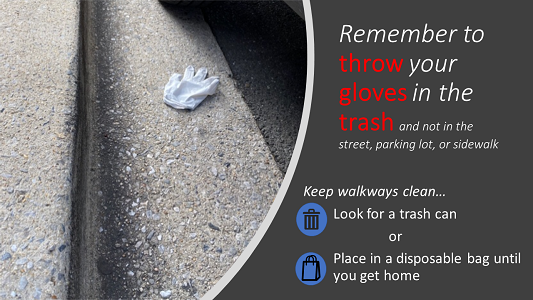Stormwater Discharges from Transportation Sources-Innovative Materials

A stormwater manual should provide helpful methods and techniques in support of an effective and comprehensive stormwater management program (SWMP). Some manuals focus on a particular aspect of stormwater management, such as one of the minimum control measures:
- public education,
- public involvement,
- construction,
- post-construction,
- illicit discharge detection and elimination, and
- good housekeeping.
Other manuals are specific to a particular region, but they still might provide innovative tools from which all transportation authorities can benefit.
Federal Innovation
- Copper-free Brake Initiative —EPA, the Environmental Council of the States (ECOS), and eight automotive industry groups, signed an agreement to reduce the use of copper and other materials in motor vehicle brake pads. This initiative will decrease runoff of those materials from roads into the nation’s streams, rivers, and lakes and is a national example of pollution prevention/source control.
- Green Streets, Green Jobs, Green Towns InitiativeExit— This partnership aims to stimulate the green jobs market and enable families to work where they live and play. Small-to-mid-sized communities can boost their local economies and protect water resources through the use of watershed planning, and design and construction of stormwater best management practices (BMPs).
- Greening America’s Capitals— This EPA program helps state capitals develop an implementable vision of environmentally friendly neighborhoods that incorporate innovative green infrastructure strategies. Through the Partnership for Sustainable Communities, EPA provides design assistance to sustainable communities that protect the environment, economy, and public health and to inspire state leaders to expand the program.
Construction
- Maryland State Highway Administration (MDSHA) Exit —MDSHA’s construction program provides statewide oversight, sets policy, and supports and contributes to building a safe highway system to enhance Maryland’s communities and economy, and the environment.
- Washington DOT Construction Manual Exit —In coordination with FHWA, the WSDOT State Construction Office coordinates the development of policies and standards to provide guidance and oversight on construction issues.
Illicit Discharge Detection and Elimination
- Ohio DOT Outfall Inventory Manual and Database —Ohio DOT’s database contains 6,826 outfalls from over 1,900 miles of roadway with specific attributes.
- Colorado Department of Transportation’s Illicit Discharge Program —Colorado DOT’s example of a web page set up for reporting illicit discharges.
Maintenance of BMPs
- Caltrans BMP Field Manual Troubleshooting Guide — Guidance for installing, inspecting, and maintenance of construction.
Pollution Prevention and Good Housekeeping
- Environmental Stewardship Practices, Procedures, and Policies for Highway Construction and Maintenance —This compilation of state transportation manuals, procedures, and practitioners can be used as a guide for good stewardship practices.
- Litter on State Highways —Washington State Department of Transportation’s Web page on litter that quantifies the amount of litter picked up, the associated costs, and their Adopt-A-Highway program.
Post-Construction
EPA Resources
- Green Infrastructure – Learn more about green infrastructure techniques that uses vegetation, soils, and natural processes to manage water and create healthier urban environments.
- Nonpoint Source Program— Learn about nonpoint source pollution programs in your area and what you can do to protect and conserve valuable ecosystems.
- EPA Green Streets Page —Green Streets are a sustainable stormwater management strategy that contributes to community redevelopment. Many cities have replaced traditional street rehabilitation with green street strategies to address stormwater, transportation, and neighborhood stabilization goals. By combining transportation choice with environmental strategies, a green street product can support redevelopment efforts from multiple stakeholder perspectives.
- Green Streets: A Conceptual Guide To Effective Green Streets Design Solutions
- Managing Wet Weather with Green Infrastructure — Municipal Handbook on Green Streets
- Stormwater to Street Trees: Engineering Urban Forests for Stormwater Management —This guide can help engineers, planners, developers, architects, arborists, and public officials understand how trees perform and interact in a stormwater management system, and the new technologies that are being used to increase the stormwater utility function of the urban forest, even in the densest urban environments.
State Manuals
The following links exit the site Exit
- Arizona DOT Post-Construction Best Management Practices (BMP) Manual
- District DOT Green Infrastructure Standards — These green infrastructure standards are required in all DDOT contracts and include drawings, requirements, and procedures.
- Minnesota Stormwater Manual — Examples of post-construction practices.
- Washington State DOT Highway Runoff Manual — Guidance for designing stormwater systems for transportation projects.
Fact Sheets
- Permeable Interlocking Concrete Pavement (PICP) Fact Sheet (PDF)(4 pp, 5.18 MB, About PDF) —Benefits and application opportunities with PICP.
- Ultra Urban BMPs —View BMP fact sheets, a FHWA Report, and BMP monitoring studies of stormwater management in an ultra-urban environment.
Handbooks
- Chicago Green Alley Handbook — BMP techniques in green alley designs and flood control.
Public Education and Public Participation
Literature
- Michigan DOT Stormwater Education Program Exit —Examples of stormwater outreach materials.
- North Carolina DOT Highway Stormwater Program, External Education Program Exit — Rest areas can be used as an educational opportunity to post pet stations and education displays.
Television Advertisement and Radio
- Don’t mess with Texas Exit —This campaign emphasizes the importance of preventing road litter.
- Don’t Trash California Exit—Caltrans provides examples of advertising for public outreach.
Monitoring Strategies
- Washington State DOT Stormwater Monitoring Program — Describes the SWMP that is included in WSDOT’s draft permit.
- Caltrans Comprehensive Protocols Guidance Manual (PDF)(667 pp, 5.01 MB, About PDF) —This manual includes monitoring protocols for stormwater quality.
